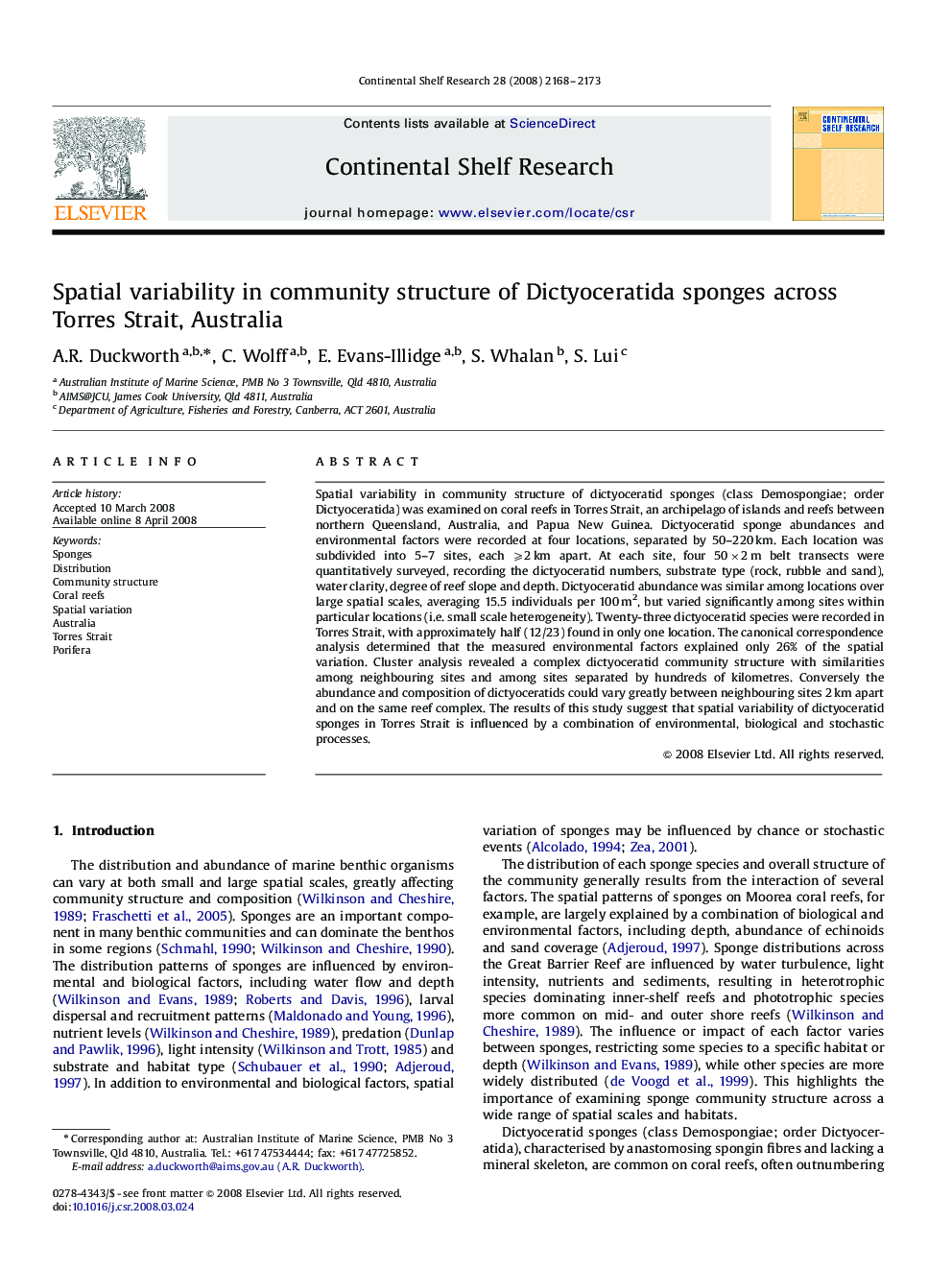| Article ID | Journal | Published Year | Pages | File Type |
|---|---|---|---|---|
| 4533327 | Continental Shelf Research | 2008 | 6 Pages |
Spatial variability in community structure of dictyoceratid sponges (class Demospongiae; order Dictyoceratida) was examined on coral reefs in Torres Strait, an archipelago of islands and reefs between northern Queensland, Australia, and Papua New Guinea. Dictyoceratid sponge abundances and environmental factors were recorded at four locations, separated by 50–220 km. Each location was subdivided into 5–7 sites, each ⩾2 km apart. At each site, four 50×2 m belt transects were quantitatively surveyed, recording the dictyoceratid numbers, substrate type (rock, rubble and sand), water clarity, degree of reef slope and depth. Dictyoceratid abundance was similar among locations over large spatial scales, averaging 15.5 individuals per 100 m2, but varied significantly among sites within particular locations (i.e. small scale heterogeneity). Twenty-three dictyoceratid species were recorded in Torres Strait, with approximately half (12/23) found in only one location. The canonical correspondence analysis determined that the measured environmental factors explained only 26% of the spatial variation. Cluster analysis revealed a complex dictyoceratid community structure with similarities among neighbouring sites and among sites separated by hundreds of kilometres. Conversely the abundance and composition of dictyoceratids could vary greatly between neighbouring sites 2 km apart and on the same reef complex. The results of this study suggest that spatial variability of dictyoceratid sponges in Torres Strait is influenced by a combination of environmental, biological and stochastic processes.
